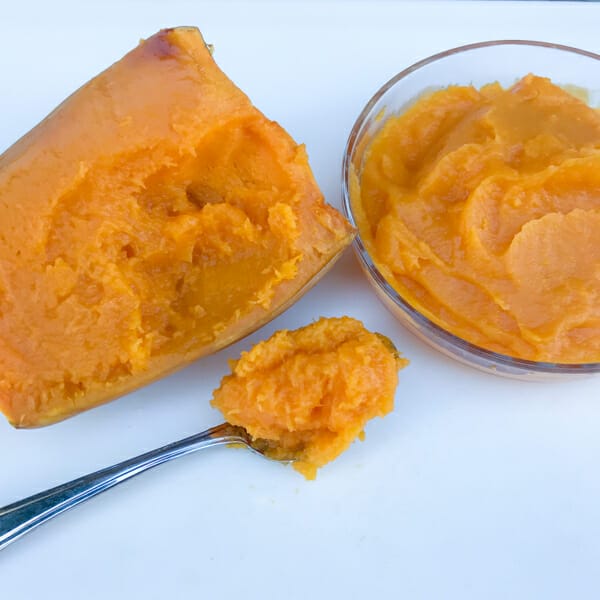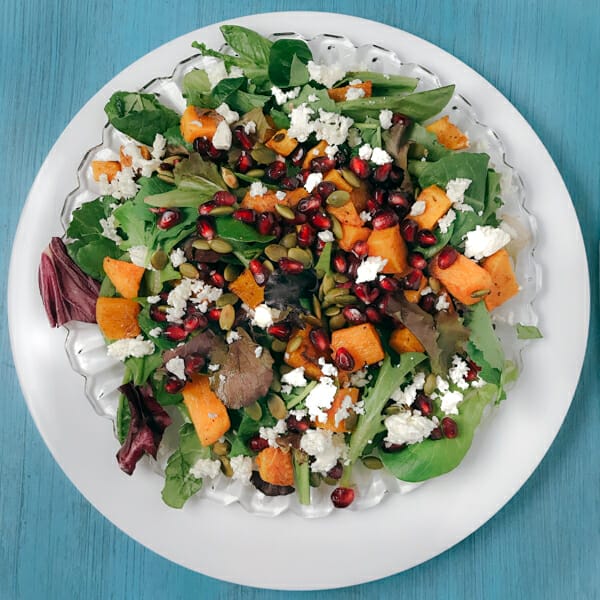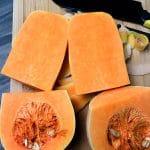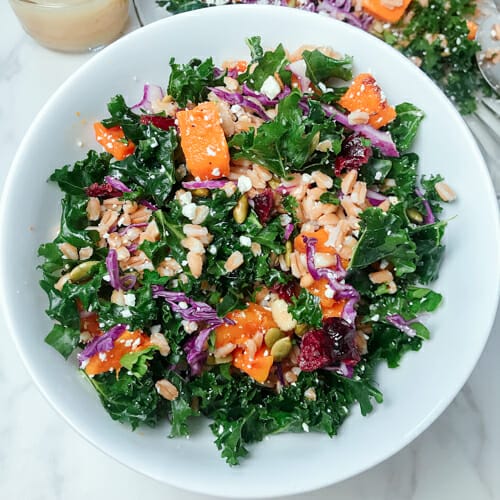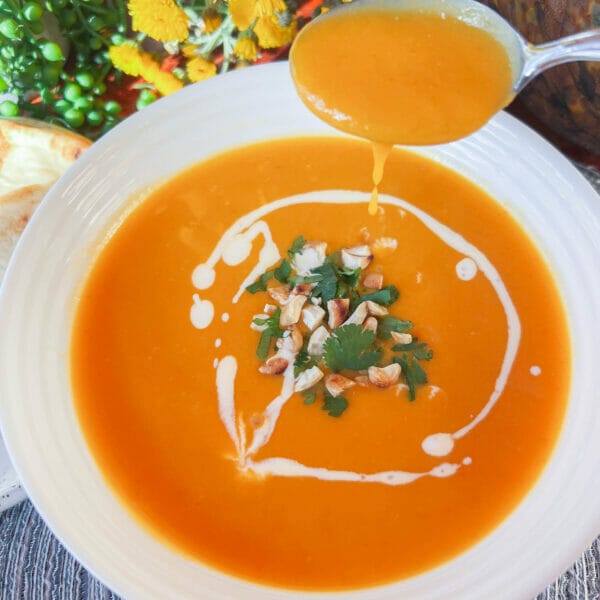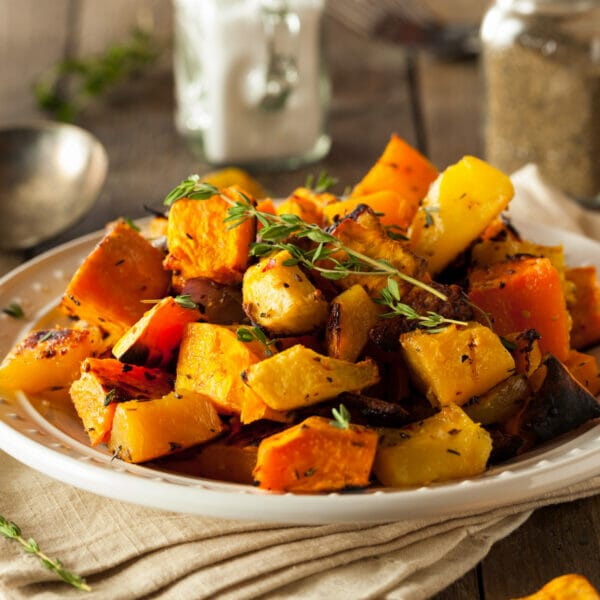How to Cut, Peel, Cube and Roast Butternut Squash
Butternut squash is probably the most popular, versatile and accessible winter squash out there. And with good reason!
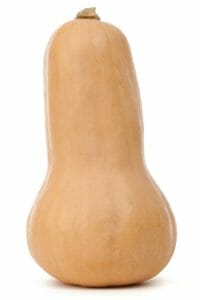
Recipes to Try: Chicken & Butternut Sheet Pan Dinner, Butternut Squash Chili, Thai Inspired Butternut Carrot Soup.
It’s delicious and nutritious! This dark beige, bell shaped squash has beautiful bright orange flesh inside. The neck portion is all edible flesh while the bulb has a seed cavity with few seeds.
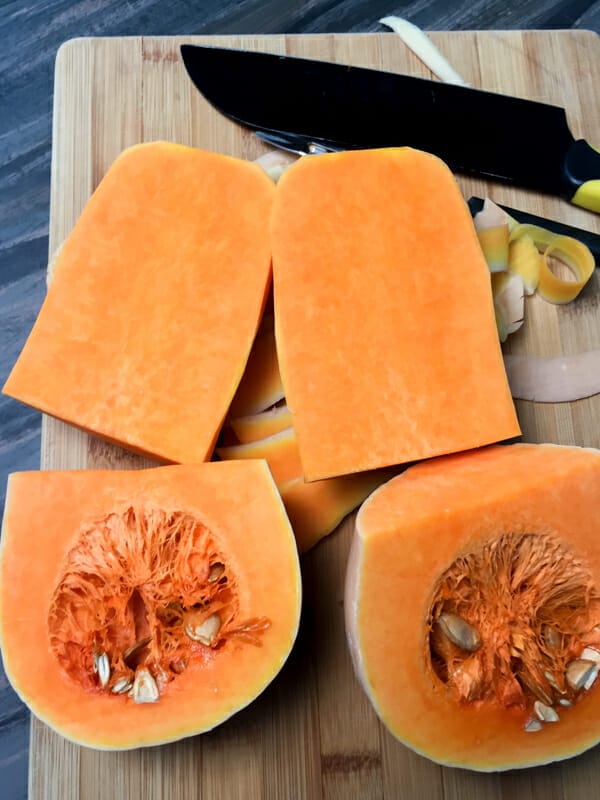
4 REASONS I LOVE BUTTERNUT SQUASH
1. Taste
Butternut squash has a lovely mild, slightly sweet flavor. I like that it’s not quite as sweet as sweet potatoes. The sweetness develops with age – so the longer you can let it ripen on the vine, the tastier. In the store, look for an even dark beige color all over without any tinges of green. Its versatile flavor can be used for sweet or savory dishes. Here are a few spice combinations to try with butternut.
- salt and pepper
- Cajun seasoning
- Italian seasoning
- Chili lime seasoning
- Taco seasoning
- Cumin and coriander
- Fresh or dried herbs – rosemary, thyme, sage or oregano
- Paprika, cumin, cinnamon, ginger & cloves
- Parmesan or Nutritional Yeast with your favourite herbs
- brown sugar, cinnamon and ginger
- maple syrup and butter
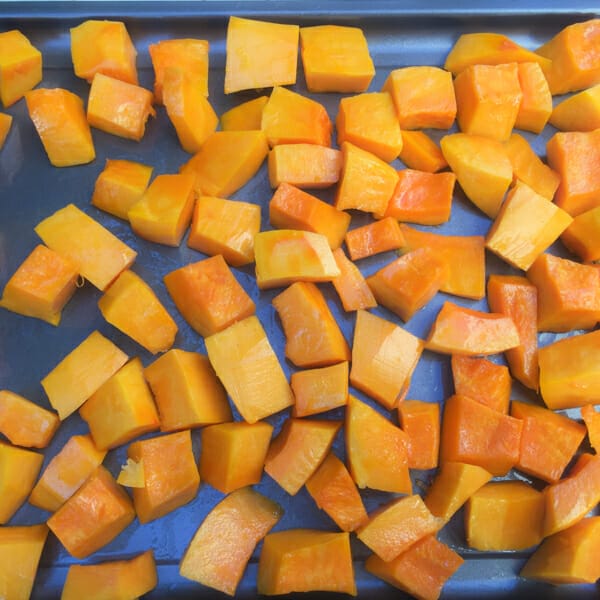
2. Texture
Butternut has a nice smooth texture without any stringy bits. Unlike pumpkin, it is not watery at all. It makes a perfectly smooth puree that can be used for sweet or savoury dishes. Try it instead of mashed potatoes (or mixed in with mashed potatoes) or instead of sweet potatoes. For sweet variations use the puree anywhere you would use pumpkin puree – pumpkin spice lattes, pumpkin scones, pumpkin fruit leather, pumpkin squares and even pumpkin pie. Cool fact – a lot of commercial pumpkin pies actually include butternut squash puree because of its texture and sweet taste. Click here to learn how to make puree.
3. It’s Easy to Work With
Butternut is a nice manageable size, is relatively easy to cut and is easy to peel. You can peel butternut with a vegetable peeler or with a sharp knife. Check out my YouTube Video on How to Cut, Peel and Cube Butternut Squash.

How to Cut, Peel, Cube & Roast Butternut Squash
How to Cut, Peel, Cube and Roast Butternut Squash
Ingredients
- 1 butternut squash
- 1 Tbsp canola oil
- 1 tsp salt
- 1/2 tsp black pepper
Instructions
- Preheat oven to 400°F (200°C).
- Wash butternut squash well and towel dry.
- Cut the stem end off the squash.
- Make a cut horizontally through the squash where the long neck portion meets the round bulb so that the neck and bulb are separated. See video for details.
- Use a vegetable peeler or a knife to peel the squash.
- Cut the neck piece in half lengthwise so you have a nice big flat surface. Lay each piece flat and slice the neck into 1/2" slices. Repeat with the other half. Turn slices on side and slice into 1/2" rows. Cut the rows into cubes. Try to keep the size as uniform as possible.
- Cut the bulb end in half vertically to reveal the inside cavity. Remove the seeds and stringy bits from the center. Continue to cut to form 1/2" cubes.
- To roast the cubes, spread them on a baking sheet, drizzle with oil. and add salt and pepper. Massage to coat evenly. Place in oven for 30 to 40 minutes.
- When tender and lightly caramelized, enjoy as a side dish or use to top a salad or pasta dish.
Video
Notes
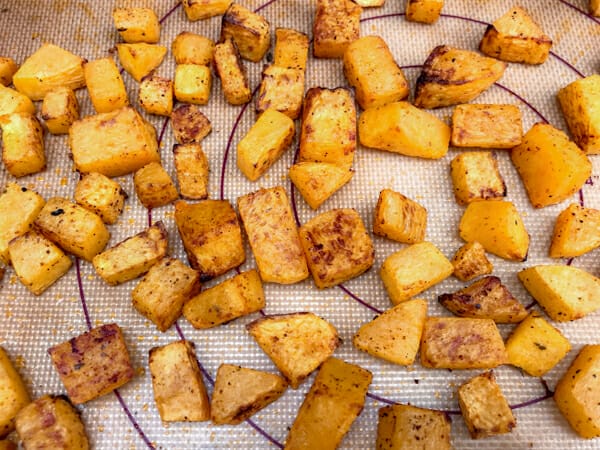
How to Freeze Butternut Squash
For my family of four, one butternut is usually enough for two different recipes. If I’m super energetic, I’ll make two recipes at once – roast half the cubes and use the other half in soup or chili. But I’m not always that energetic! When I have more butternut cubes than I can use, I freeze them. It’s super easy.
Take butternut cubes. Place in freezer bag. Label and seal. Use within 3 months.
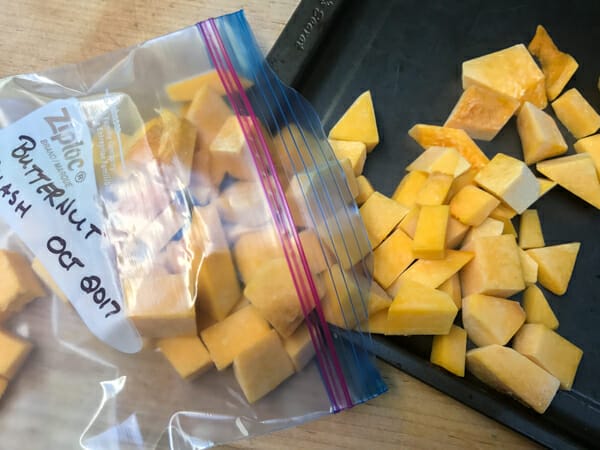
Use just like you would raw squash. You don’t even need to thaw the squash, just extend the overall cooking time a little. For roasted frozen squash, preheat your pan and your oven so you get nice crispy results.
Recipes that use Cubed Butternut Squash
Get more Squash Recipes & Tips
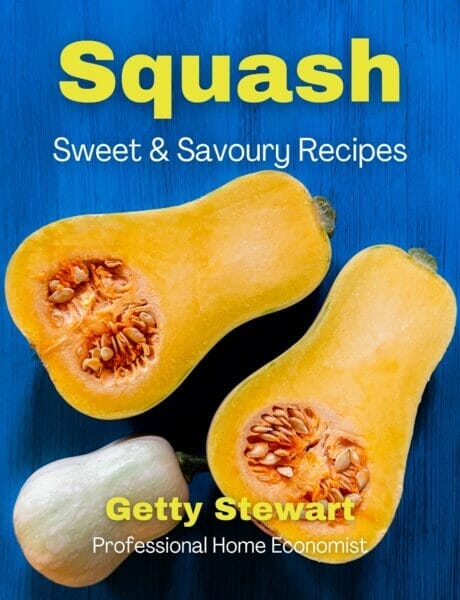
Get the ultimate Squash cookbook & resource here
With NO ads, and all the best tips & recipes in one convenient place! Squash: Sweet & Savoury Recipes.
34 recipes + practical tips…
- how to identify varieties of winter squash
- learn to substitute squash in different recipes
- select the most flavourful & fresh squash
- storing and preserving squash
- how to cut these big awkward fellas
- solve all your squash FAQs
Available in ebook and paperback formats.
Now you tell me, what’s your favorite way to use butternut? Leave a comment here or on social media, I’m on instagram @getgettys and Facebook @GettyStewart.HomeEconomist.


